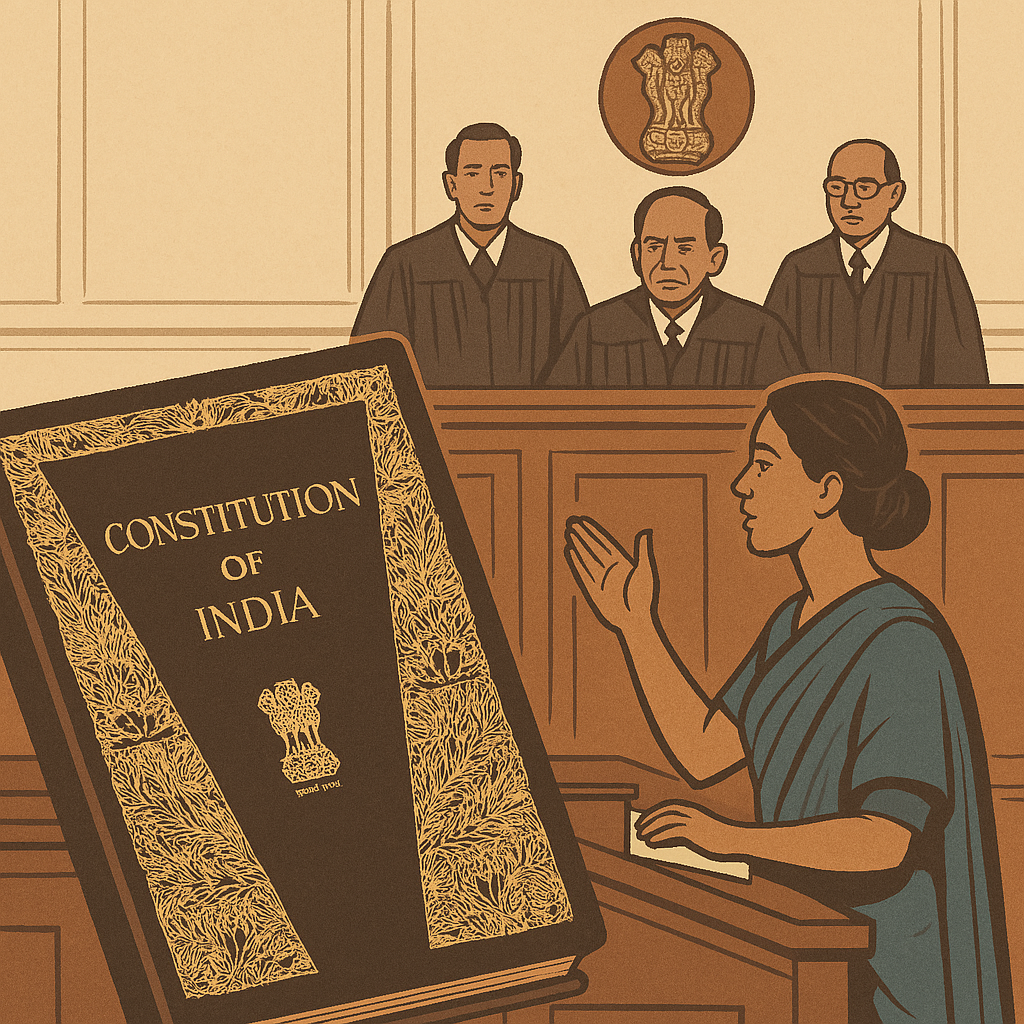The Doctrine of Pith and Substance helps determine the true nature of a law when there’s a conflict between Central and State laws, ensuring that legislative powers are respected without invalidating overlapping laws unnecessarily.
📚 Introduction
India follows a quasi-federal system where powers are distributed between the Union and State Governments through three lists in the Seventh Schedule of the Constitution:
-
Union List (List I) – Central Government powers
-
State List (List II) – State Government powers
-
Concurrent List (List III) – Both can legislate
But what happens when a State law seems to intrude into Central jurisdiction or vice versa?
This is where the Doctrine of Pith and Substance steps in—it helps the courts look beyond the surface and understand the true nature and intent of the law.
🔍 What Is the Doctrine of Pith and Substance?
“Pith” means essence or core, and “Substance” means true meaning.
So, the doctrine means that if a law’s core subject falls within the powers of the lawmaker (State or Centre), it is valid—even if it incidentally touches subjects from another list.
The focus is on what the law is really about, not just what it appears to deal with on the surface.
🧠 Why It’s Needed
-
Laws are complex and often touch multiple subjects
-
Helps prevent the unnecessary invalidation of laws
-
Ensures federal flexibility while preserving the division of powers
📘 Landmark Case: State of Bombay v. F.N. Balsara (1951)
-
The Bombay Prohibition Act restricted the sale of liquor.
-
A challenge was made that it also affected import and export, which falls under the Union List.
-
The Supreme Court upheld the Act, saying that its pith and substance was public health and morals (State subject), not trade or commerce (Union subject).
📘 Another Important Case: State of Rajasthan v. G. Chawla (1959)
-
The Rajasthan law controlled the use of loudspeakers.
-
Though it affected freedom of speech, the pith and substance was public order and noise control, which is a State subject.
-
The Court upheld the law.
✅ Key Features of the Doctrine
-
Focuses on intent: Looks at the law’s main objective, not minor overlaps
-
Allows incidental encroachment: Minor interference with another list is acceptable
-
Protects legislative powers: Prevents laws from being struck down on technical grounds
🧾 How Courts Apply the Doctrine
When deciding on legislative conflict, the court asks:
-
What is the true purpose of the law?
-
Does it primarily deal with a subject under the State/Union’s authority?
-
Are overlaps incidental or substantial?
If the answer supports the legislature’s power, the law survives, even if there’s some overlap.
⚖️ Related Doctrines
-
Doctrine of Harmonious Construction – Used when two laws from different lists must be read together.
-
Doctrine of Colourable Legislation – Used when a law pretends to be on one subject but actually legislates on another (bad faith).
🧩 Conclusion
The Doctrine of Pith and Substance is a balancing tool in Indian federalism. It allows practical flexibility while respecting the Constitution’s division of powers. Instead of mechanically striking down laws with overlaps, courts use this doctrine to uphold legislative intent and constitutional harmony.
It’s yet another example of how the Indian judiciary ensures that the law is not just about lines on paper—but about purpose and justice.

